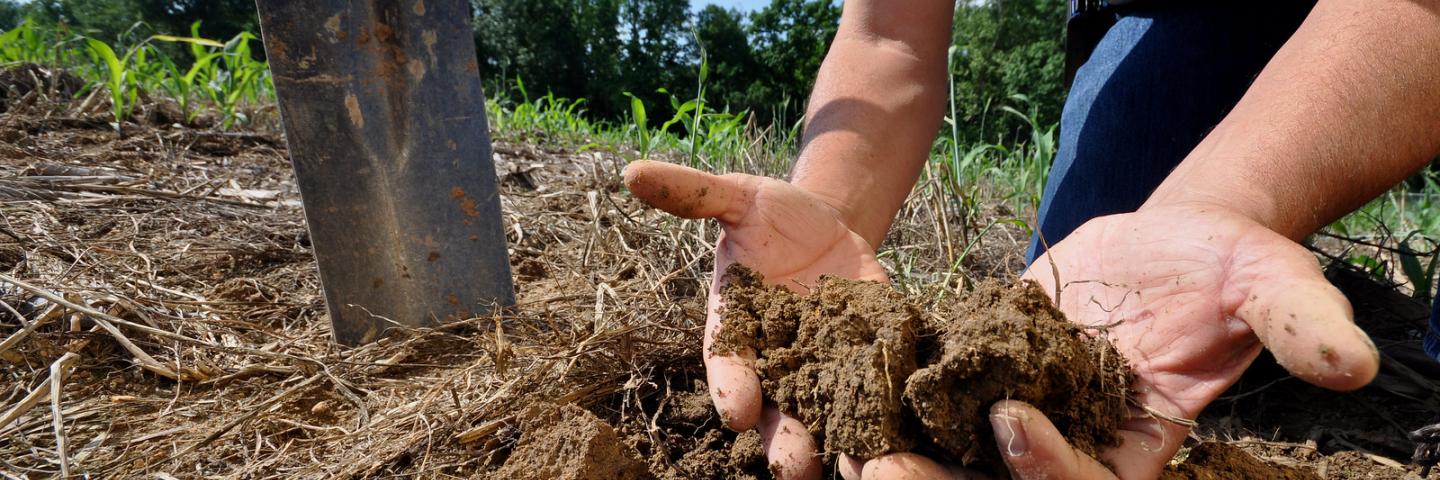
Learn about EQIP Conservation Planning Activities (CPAs), Design and Implementation Activities (DIAs), and Conservation Evaluation and Monitoring Activities (CEMAs).
On this page:
- What are CPAs, DIAs, and CEMAs?
- Program Guidance
- Fiscal Year 2025 Conservation Activities
- Previous FY EQIP Conservation Activities Resources
What are CPAs, DIAs, and CEMAs?
CPAs, DIAs, and CEMAs are EQIP financial assistance opportunities for participants to hire Technical Service Providers (TSP) or Qualified Individuals (QI) to provide conservation planning, practices designs or implementation instructions, and monitoring or evaluation of conservation measures applied to the land.
TSP and QI include individuals, private businesses, American Indian tribes, nonprofit organizations, and public agencies. TSPs expand the number and availability of conservation technical experts capable of offering customized, one-on-one conservation advice to agricultural producers.
NRCS established these three categories of activities to align the TSP/QI assistance with phases of the NRCS conservation planning process.
Conservation Planning Activities (CPAs)
CPAs produce conservation plans that document participant objectives, existing resource concerns, and participant decisions regarding conservation practices and activities that will be used to address identified resource concerns. CPAs are:
- Provided by a Technical Service Provider (TSP) with appropriate certification in NRCS Registry.
- Consistent with steps 1-7 of the NRCS conservation planning process.
Design and Implementation Activities (DIAs)
DIAs produce designs, prescriptions, or other instructions for implementing a single conservation practice, or a system of conservation practices derived from the participant’s conservation plan.
- DIAs are provided by Technical Service Providers (TSP) with appropriate certification in NRCS Registry.
- DIAs are consistent with Step 8 of the NRCS conservation planning process.
- DIA scope does not include assistance for conservation practice installation, review, and checkout.
Conservation Evaluation and Monitoring Activities (CEMAs)
CEMAs produce results of an evaluation, monitoring, test, or assessment.
- CEMA are provided by Qualified Individuals (QIs). QIs self-certify they meet qualification criteria stated in a CEMA document. Professional licenses, accreditations, certifications, and experience typify qualification criteria for CEMA QIs. A QI may, or may not also hold TSP certification.
- CEMAs inform the participant and conservation planner about natural resource conditions on the area evaluated.
- CEMA results can support adaptive management strategies, lead to new and revised conservation plans; and support development of new or revised site-specific conservation practice installation instructions.
- CEMAs are consistent with Step 9 of the NRCS conservation planning process, but may be used at any point in the iterative steps of conservation planning.
Program Guidance
NRCS program policy and guidance to support implementation of the CPAs, DIAs, and CEMAs Conservation Activities through the EQIP program is available at NRCS eDirectives – National Instruction 440-320.
Fiscal Year 2025 Conservation Activities
Conservation Planning Activities (CPAs)
CPA 102 Comprehensive Nutrient Management Plan 10-2024 (834.4 KB)
CPA 106 Forest Management Plan 10-2024 (853.75 KB)
CPA 110 Grazing Management Plan 10-2024 (795.6 KB)
CPA 116 Soil Health Management Plan 10-2024 (858.28 KB)
CPA 138 Conservation Plan Supporting Organic Transition 10-2024 (871.3 KB)
CPA 199 Conservation Plan 10-2024 (707.2 KB)
Design and Implementation Activities (DIAs)
DIA 101 CNMP Design and Implementation Activity 10-2024 (615.5 KB)
DIA 120 Agricultural Energy Design 10-2024 (761.51 KB)
DIA 140 Transition to Organic Design 10-2024 (905.02 KB)
DIA 144 Fish and Wildlife Habitat Design (677 KB)
DIA 148 Pollinator Habitat Design (578.75 KB)
DIA 157 Nutrient Management Design-10-2024 (859.41 KB)
DIA 158 Feed and Management Design (549.08 KB)
DIA 159 Grazing Management Design 10-2024 (639.78 KB)
DIA 160 Prescribed Burning Design (652.27 KB)
DIA 161 Pest Management Conservation System Design (942.9 KB)
DIA 162 Soil Health Management System Design 10-2024 (247.94 KB)
DIA 163 Irrigation Water Management Design 10-2024 (789.47 KB)
DIA 164 Improved Management of Drainage Water Design 10-2024 (677.82 KB)
DIA 165 Forest Management Practice Design 10-2024 (534.03 KB)
Conservation Evaluation and Monitoring Activities (CEMAs)
CEMA 201 Edge of Field Water Quality Monitoring Data Collection and Evaluation 10-2023 (506.13 KB)
CEMA 202 Edge of Field Water Quality Monitoring System Installation 10-2022 (590.54 KB)
CEMA 204 Adaptive Management Statistical Tool Spreadsheet 10-2024 (56.32 KB)
CEMA 204 Adaptive Management for Soil Health 10-2024 (817.06 KB)
CEMA 206 Feed and Forage Analysis 10-2023 (218.39 KB)
CEMA 207 Site Assessment and Soil Testing for Contaminants Activity 10-2022 (216.96 KB)
CEMA 209 PFAS Testing in Water or Soil 10-2022 (201.94 KB)
CEMA 216 Soil Health Testing 10-2024 (376.71 KB)
CEMA 217 Soil and Source Testing for Nutrient Management 10-2022 (222.48 KB)
CEMA 218 Carbon Sequestration and Greenhouse Gas Mitigation Assessment 11-24 (288.82 KB)
CEMA 219 Prescribed Grazing Conservation Evaluation and Monitoring 10-2023 (199.28 KB)
CEMA 221 Soil Carbon Stock Monitoring 10-2024 (602.76 KB)
FY25 CEMA 222 Indigenous Stewardship Methods Evaluation (221.98 KB)
CEMA 223 Forest Management Assessment 10-2022 (218.96 KB)
CEMA 224 Aquifer Flow Test 1-2025 (315.45 KB)
CEMA 226 Site Suitability and Feasibility for Waste Storage Facility 10-2023 (188.67 KB)
CEMA 227 Evaluation of Existing Waste Storage Facility Components 10-2023 (198.76 KB)
CEMA 228 Ag Energy Assessment 10-2023 (299.67 KB)
CEMA 297 Feral Swine Damage Assessment 10-2022 (209.83 KB)






